Articles from the past several years are rife with writers lamenting the “decay of customer loyalty,” as well as studies claiming record-low numbers of brand loyal consumers.
Many “commonly accepted truths” about the retail industry, however, were thrown into question with the onset of COVID-19. Back in March 2020, we polled 2,000 consumers to see the effects of the pandemic on consumer shopping habits. We found that even just a few weeks into our new normal, shopper behavior was already beginning to evolve.
Our latest study of 3,800 respondents across four different demographics (Gen Z, Millennials, Gen X, and Baby Boomers) and three different geographies (US, UK, and Australia) reveals among the many changes in shopper behavior due to COVID-19, consumer loyalty has actually gone up year-over-year from 2019 to 2020.
Read on to discover:
- Just how much loyalty rates have gone up from 2019 to 2020
- What today’s shoppers are willing to do for a brand they’re loyal to
- The specific rewards consumers want and expect from a loyalty program
- What your brand can do to take advantage of this massive upsurge in customer loyalty
Respondents are more brand loyal YoY
In 2019 and then again in 2020, we asked shoppers the same set of questions related to brand loyalty.
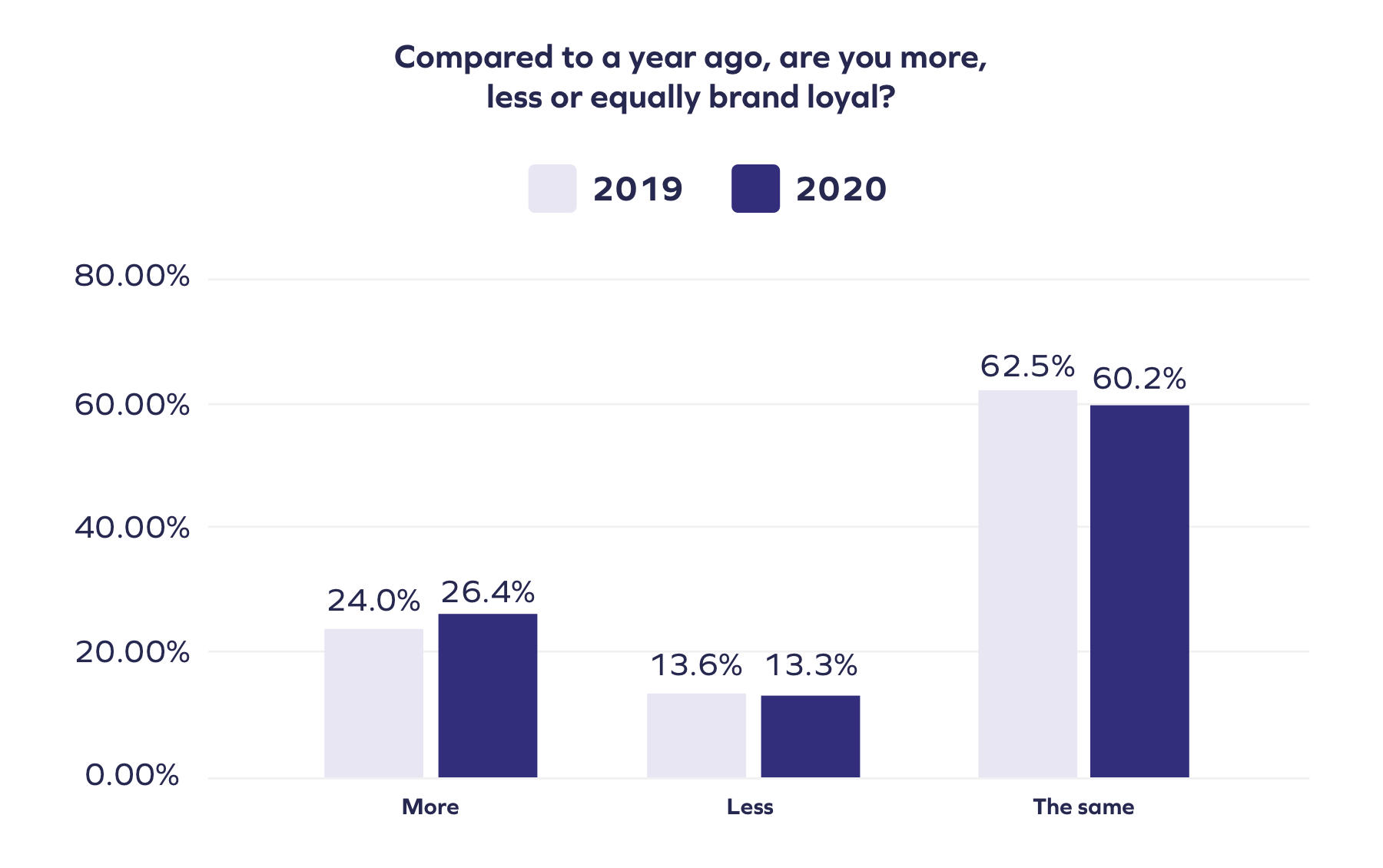
When asked to rate their brand loyalty compared to one year ago, the number of survey respondents who rated themselves “more” brand loyal actually went up from 24.0% in 2019 to 26.4% in 2020. Those who rated themselves as “less” loyal, meanwhile, remained steady at around 13%.
Respondents are loyal to a greater number of brands

The number of respondents who said they were loyal to “1 to 5 brands” went down from 2019 to 2020 (59.7% to 54.7%) as did the number of respondents claiming to be loyal to no brands at all (5.6% to 2.7%.)
How was this change reflected in the data? Those claiming to be loyal to “6 to 10 brands” went up from 2019 to 2020 (26.2% to 31.1%), as did those loyal to “11 to 20 brands” (6.2% to 8.0%), and “20+ brands” (2.5% to 3.6%).
Respondents will go the distance for brands they love
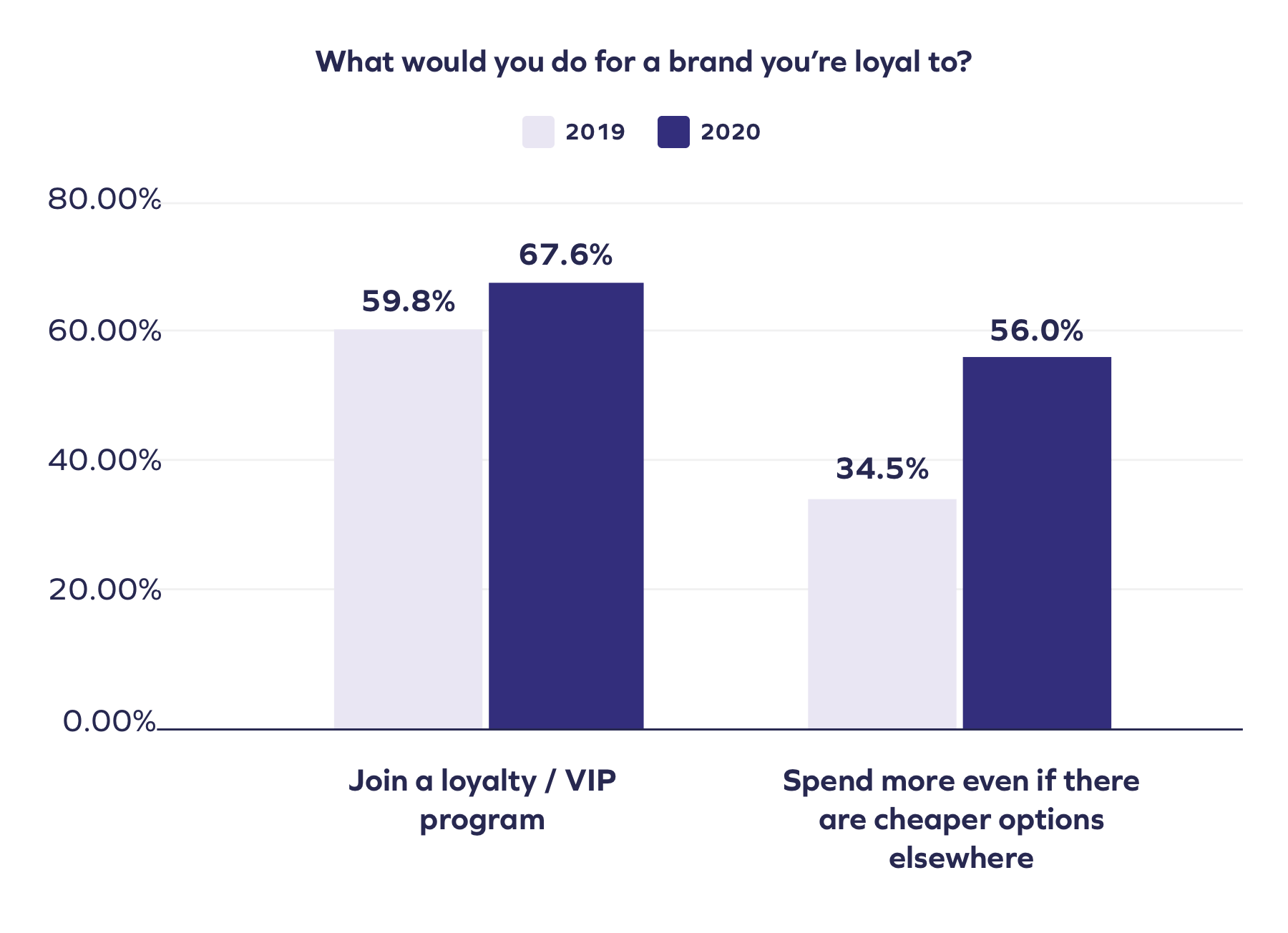
When asked what sort of actions they would be willing to take for brands they’re loyal to, nearly 68% of 2020 survey respondents said they’d join the brand’s loyalty or VIP program, up from 59.8% in 2019. Similarly, those willing to spend more on a brand if even cheaper options existed skyrocketed from 34.5% in 2019 to 56% in 2020.
This dramatic increase in brand loyalty is attributed to the effects of COVID-19
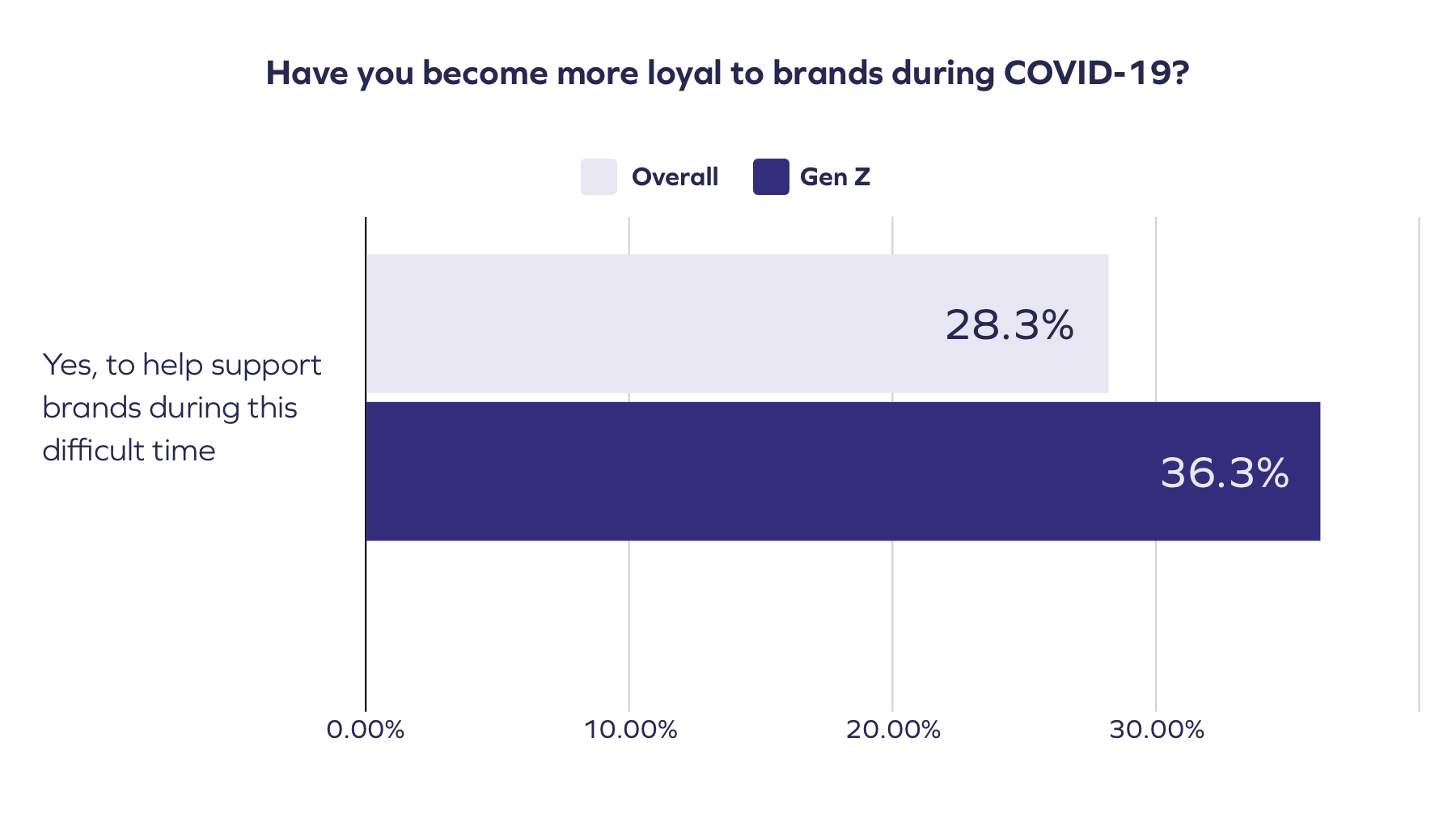
With nearly 30% of overall respondents — and 36.3% of Gen Z respondents in particular — saying they’ve become more loyal to brands to help support them during this difficult time, we can see the direct effect that COVID-19 has had on consumer loyalty and buying behavior.
Consumers are more emotionally invested in their favorite brands now than they have been in the past, viewing the shopper-brand relationship as more than just a transactional exchange. This also helps explain why, in 2020, survey respondents were more likely to spend more on a brand they’re loyal to; it’s no longer just about the money.
What can brands do to nurture customer loyalty?
Be vocal about the causes that matter to you
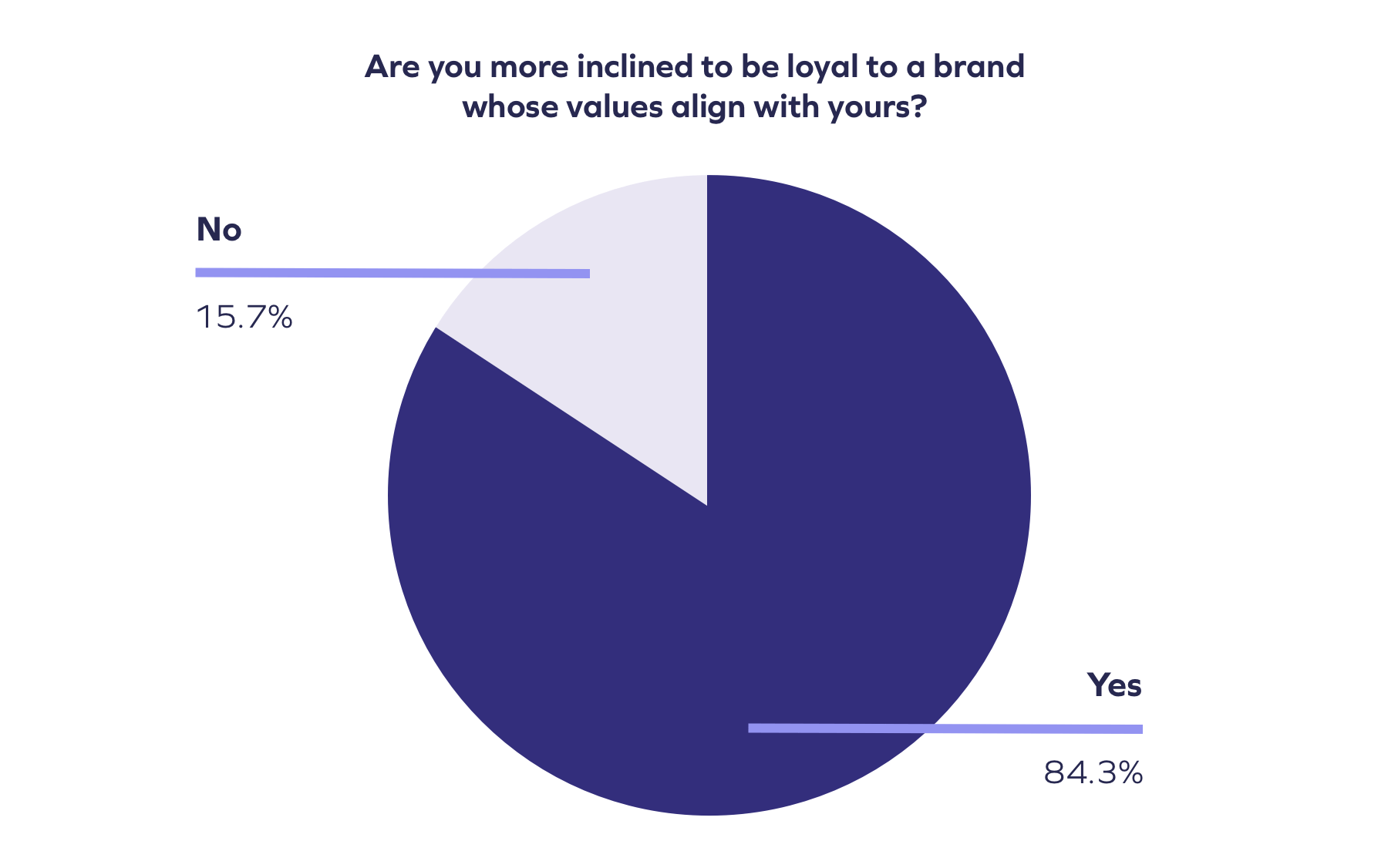
When asked if they were more inclined to be loyal to a brand whose values aligned with theirs, a whopping 84.3% of respondents said yes. Being more vocal about your brand values can play out in myriad different ways, including:
- Creating a page on your website that features a cause, charity, or value that is close to your brand’s heart. Essential oils brand Aromatherapy Associates, for example, proudly touts their B Corp Certification on a dedicated page on their site.
- Offering important resources to help your shoppers get involved. Click on the “Activism” section on Patagonia’s website, and, based on your location, you’ll be shown grassroots environmental activist groups in your area.
- Finding new ways to be a part of an important and ongoing dialogue. Intimately, which makes underwear for disabled folks that is both “functional” and “fashionable,” has a section on their site called “Stories By You”, where community members share stories, advice, tips, resources, and more.
- Enabling donation through your loyalty program. Men’s grooming brand Blind Barber integrated eCommerce donation solution ShoppingGives with their Yotpo loyalty program to incentivize customers to donate to Operation Underground Railroad by rewarding them with one rewards point per every dollar donated.
Turn your loyal customers into VIPs
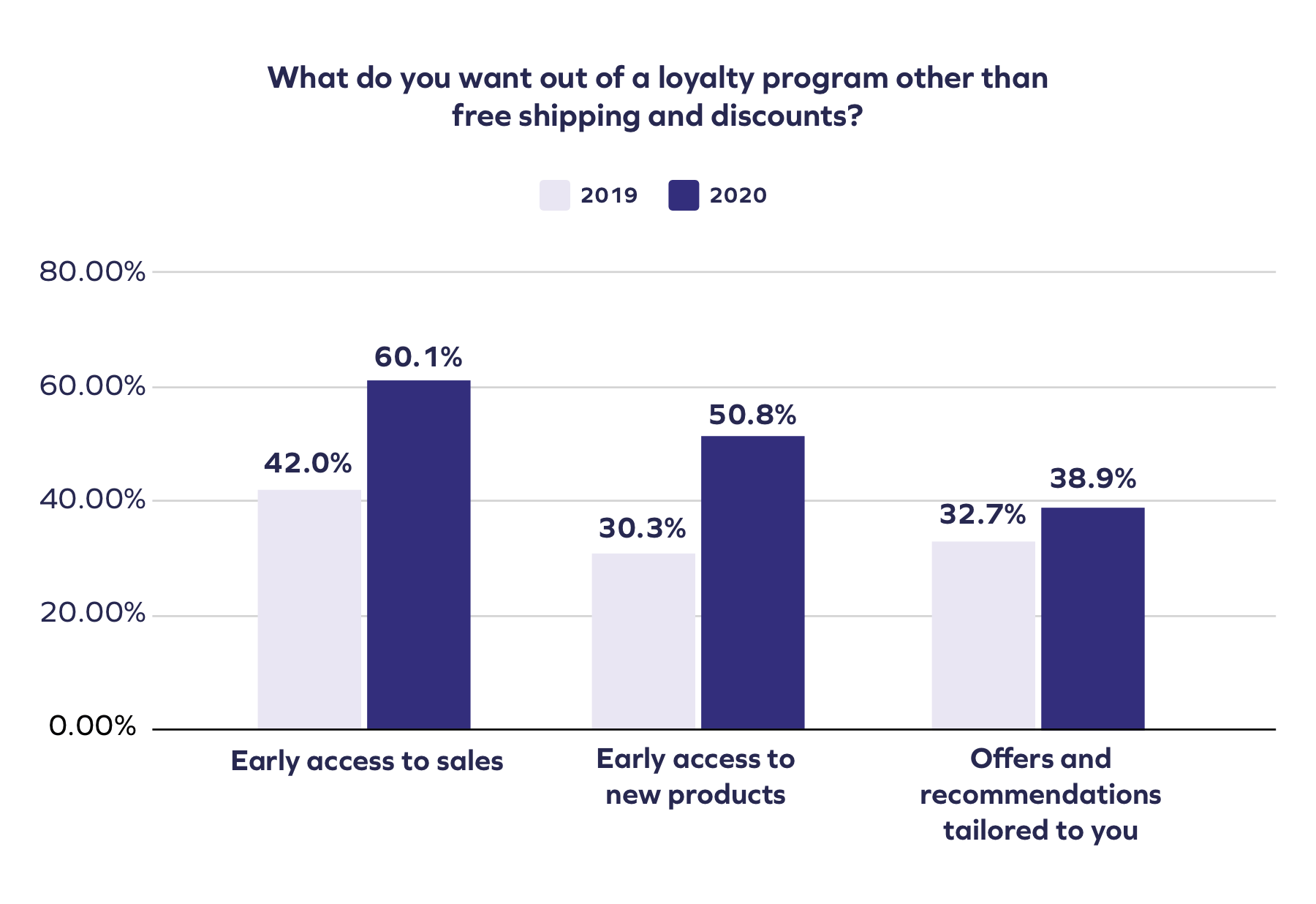
We asked survey respondents in 2019 and then again in 2020 what they wanted out of a loyal program other than free shipping and discounts which, in today’s world, are considered a low bar.
Two distinct responses, “early access to sales” and “early access to new products,” shot up considerably from 2019 to 2020 — 42.0% to 60.1% and 30.3% to 50.8%, respectively. “Offers and recommendations tailored to you” also went up, from 32.7% to 38.9%.
The main takeaway? Your customers actually do care about more than just free shipping and discounts when it comes to your loyalty program; for many, getting a VIP experience — early access and personalized recommendations — has become significantly more important since 2019.
What does this look like in action? Body positive bra brand ThirdLove created a tiered VIP loyalty program, “Hooked,” that is free to join, and focuses on customers’ lifetime spend, so members can still get rewarded even if they purchase infrequently, as is often the case in the lingerie industry.

ThirdLove’s tiered VIP loyalty program, Hooked.
As members climb the tiers, from Admirer, to Enthusiast, to Devotee, they unlock rewards like “early access to new arrivals,” “exclusive seasonal offers,” “limited edition product access,” “annual birthday gift,” and other benefits that go beyond just the transactional, focusing instead on exclusivity and the customer-brand relationship.
Replicate the in-store experience onsite
With so many stores around the country temporarily or even permanently shuttered due to COVID-19, creating an onsite experience that is as similar as possible to the one a customer might have shopping in-person is another essential piece of the puzzle when it comes to keeping your loyal customers engaged. You can do this by displaying reviews and visual UGC prominently across your homepage, product pages, and checkout page.
When shoppers land on organic skincare brand Green People’s website, they are greeted by an onsite gallery filled with photos from Green People’s Instagram feed, all with “buy now” options, helping to recreate the “discovery” experience that a customer might have upon walking into a store and taking in all of the products on display.
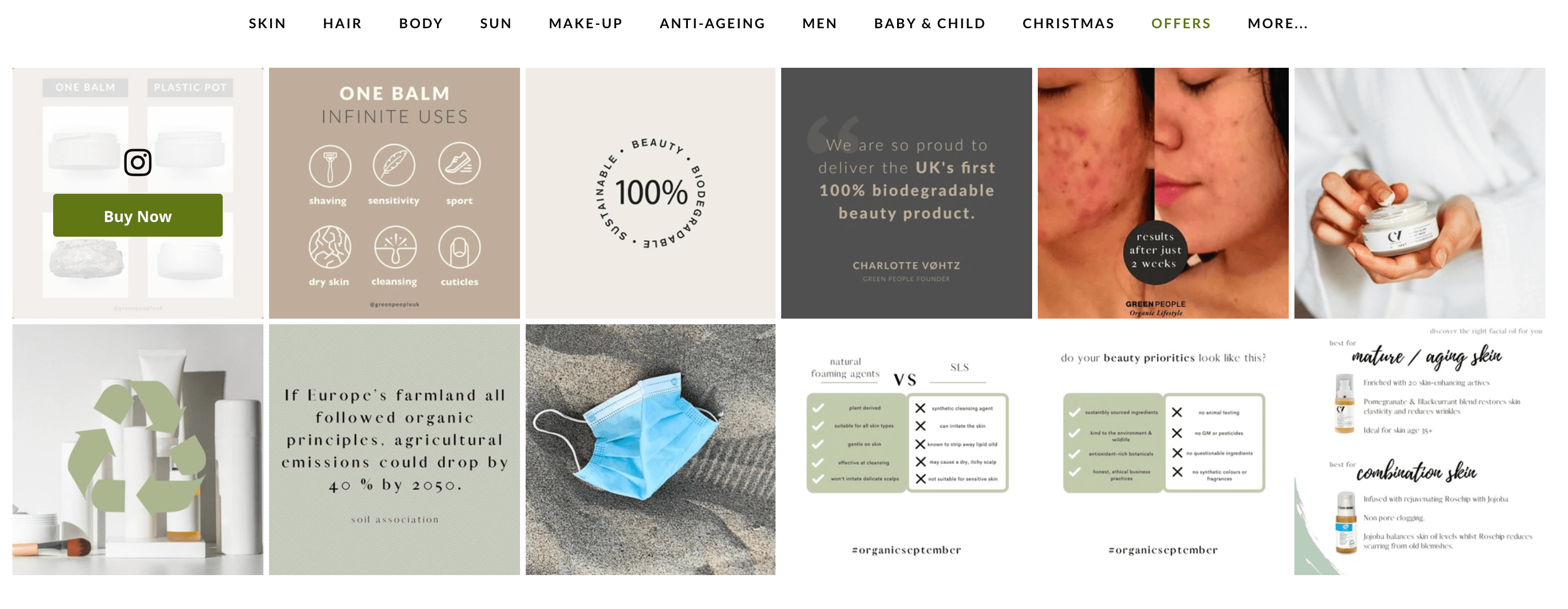
After clicking through to a specific product, not only are they shown customer reviews, but they are given the option to filter reviews by the topics most relevant to their concerns, such as “irritation,” “ingredients,” “fragrance,” and so on, replicating the exchange they would be able to have in-store with a knowledgeable salesperson.
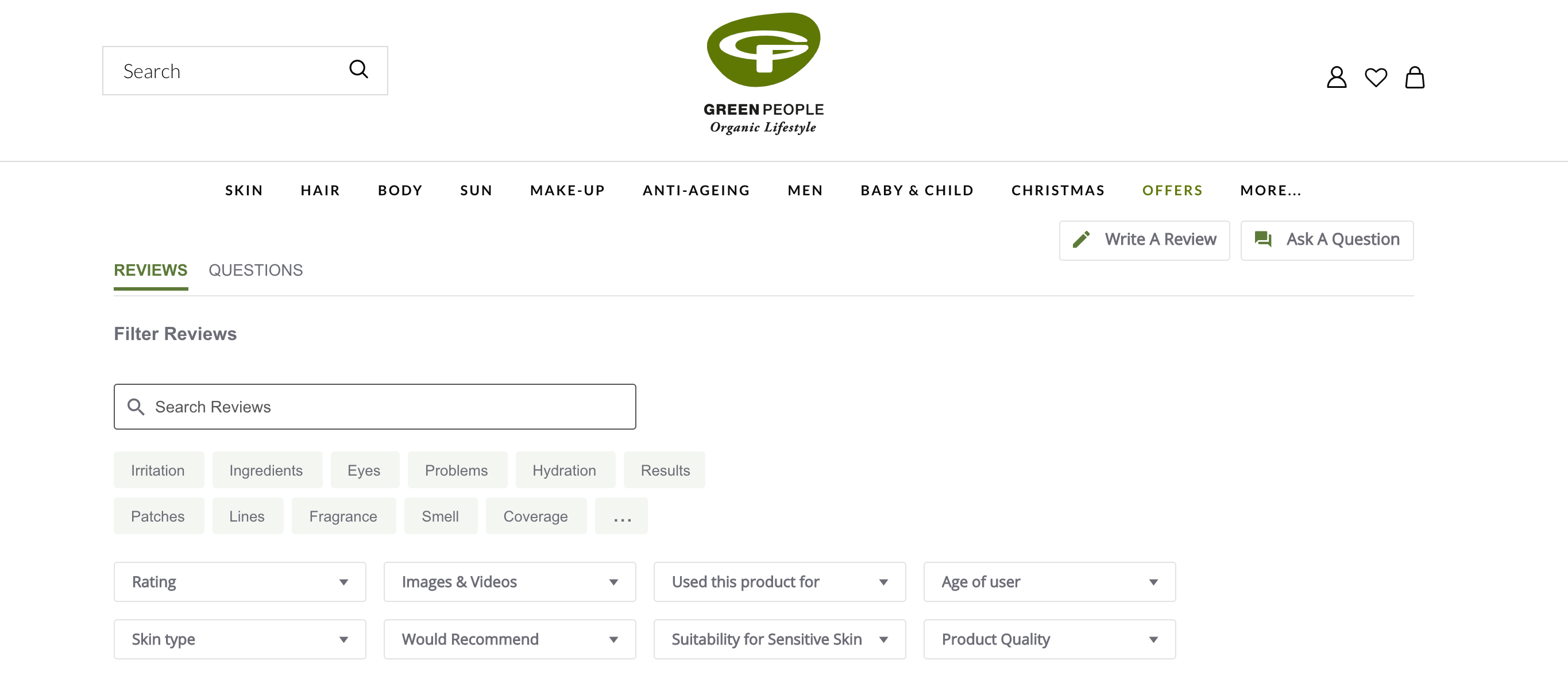
Finally, as they continue through to the checkout page, they are shown personalized product recommendations based on what other customers also purchased.

Top takeaways
Contrary to what many in the industry hold as common knowledge, customer loyalty is actually on the rise. This change in consumer behavior is directly attributable to the impact of COVID-19 on the retail industry:
- Loyalty rates are up because of COVID-19: 30% of overall respondents say they’ve become more loyal to brands to help support them during this difficult time.
- Customers will do a lot for brands they’re loyal to: 67.6% of survey respondents said they’d join the loyalty or VIP program of a brand they’re loyal to (compared to 59.8% in 2019), while 56% said they’d spend more on a brand they’re loyal to even if cheaper options existed elsewhere (compared to 34.5% in 2019).
- Your loyalty program members want exclusive access: When asked what they wanted out of a loyalty program, 60.1% of respondents said they wanted “early access to sales” (compared to 42.0% in 2019) and 50.8% said “early access to new products” (compared to 30.3% in 2019).
As we head into 2021, make sure to invest in emotional over strictly transactional relationships with loyal customers to keep them engaged and to drive both retention and CLTV.
Learn how Yotpo can help your brand nurture and engage loyal customers with reviews, visual UGC, SMS marketing, loyalty, and more.



